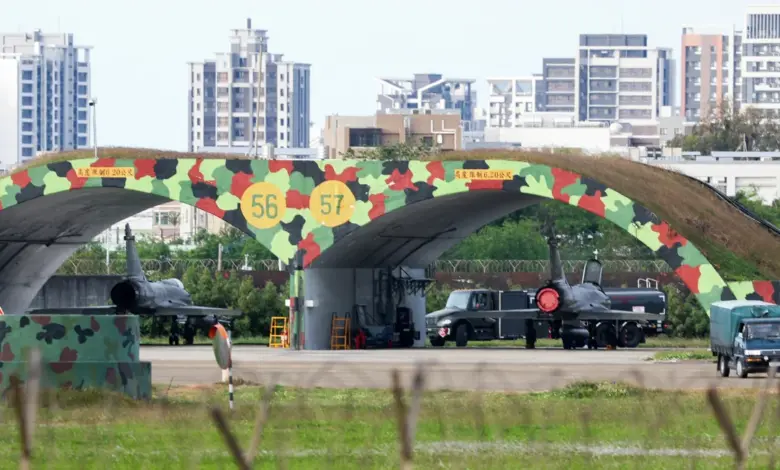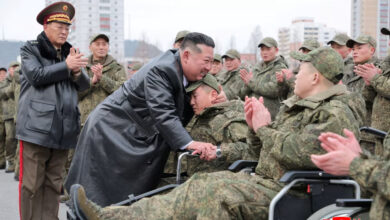
Multiple formations of Chinese naval and coast guard vessels are moving in waters around the Taiwan Strait and the Western Pacific, Taiwan’s Defense Ministry said Monday, as the island braces for potential military drills by Beijing.
Taiwan’s armed forces had identified Chinese People’s Liberation Army (PLA) vessels from the Eastern, Northern, and Southern Theater Command, as well as Coast Guard vessels entering the areas, the ministry said in statement.
The military movement comes days after Taiwan President Lai Ching-te sparked Beijing’s ire by making unofficial stops in Hawaii and the US territory of Guam during a weeklong South Pacific tour, which wrapped Friday.
Chinese authorities voiced firm opposition to Lai’s trip, referring to him as a “separatist.” Lai’s trip came after the US approved new arms sales to Taiwan, which prompted China to vow “strong countermeasures.”
China’s ruling Communist Party claims the self-ruling democracy as its own territory, despite never having controlled it and views unofficial interactions between the US and Taiwan as a violation of its sovereignty.
Taiwan’s leadership rejects China’s territorial claims over it, while Beijing has vowed to “reunify” with the island and has not ruled out taking it by force.
Taiwan’s Defense Ministry on Monday also said it had started combat readiness exercises “to counter PLA activities” and remained on high alert monitoring the PLA movements.
“Any unilateral provocations could undermine Indo-Pacific peace and stability. We will address all gray zone incursions and ensure our national security,” the ministry said in a post on the social media platform X.
Larger naval deployment
Beijing has in the past used military drills to intimidate Taiwan in response to actions it views as violating its claims over the island – part of a wider trend of its increased military pressure that’s played a role in tightening the unofficial partnership between Washington and Beijing.
A senior Taiwan official told CNN that China’s current naval deployment is larger than those in its two previous rounds of military drills around the island earlier this year.
In May, days after Lai’s inauguration, China launched two days of large-scale military drills surrounding Taiwan in what it called “punishment” for so-called “separatist acts.” It called those drills “Joint Sword-2024A.”
China then conducted “Joint-Sword-2024B” drills in October, after Lai said during a National Day address that the island was “not subordinate” to China.
The latest military movement by China appears to differ from those two drills, the Taiwan official noted.
Instead of encircling Taiwan, Chinese naval ships appear aiming to assert control within the first island chain – a strategic chain of islands encompassing Japan, Taiwan, parts of the Philippines and Indonesia, the official added.
Taiwan’s Defense Ministry also said on Monday that the PLA had designated seven zones of reserved airspace to the east of its coastal Zhejiang and Fujian provinces, which lie to the north and northwest of Taiwan respectively.
These zones are temporarily reserved for a particular user during a set period, though other aircrafts can still pass through with permission from the controllers of the airspace, according to international aviation rules.
‘Never bow down to authoritarianism’
When asked about the vessels and airspace restrictions cited by Taiwan, Chinese Foreign Ministry spokesperson Mao Ning said Monday: “Taiwan is an integral part of China’s territory. The Taiwan issue is China’s internal affair. China will firmly safeguard its national sovereignty and territory.”
Lai made his stopovers in Hawaii and Guam during a tour to the Marshall Islands, Tuvalu, and Palau – who are among a handful of Taiwan’s remaining diplomatic allies. Such unofficial stopovers in the US are customary for Taiwan leaders.
The visit was Lai’s first to the United States since becoming president in May. The leader, who has long faced Beijing’s wrath for championing Taiwan’s sovereignty, used his travel to tout solidarity with likeminded democracies.
During his stop in Guam, Lai called on likeminded countries to “never bow down to totalitarianism.”
“I hope that all of our compatriots, no matter where you are, will make a joint commitment to continue to deepen our democracy and protect it,” Lai said in an address to members of the overseas Taiwan community, as well as Guam Governor Lou Leon Guerrero on Thursday.
Lai also had a phone call with US House of Representatives Speaker Mike Johnson during his stopover on the US territory, which houses some of the most strategically important American bases in the Pacific.
Beijing lashed out at Lai’s travel throughout last week and vowed to “take resolute and strong measures to defend our nation’s sovereignty and territorial integrity.”




